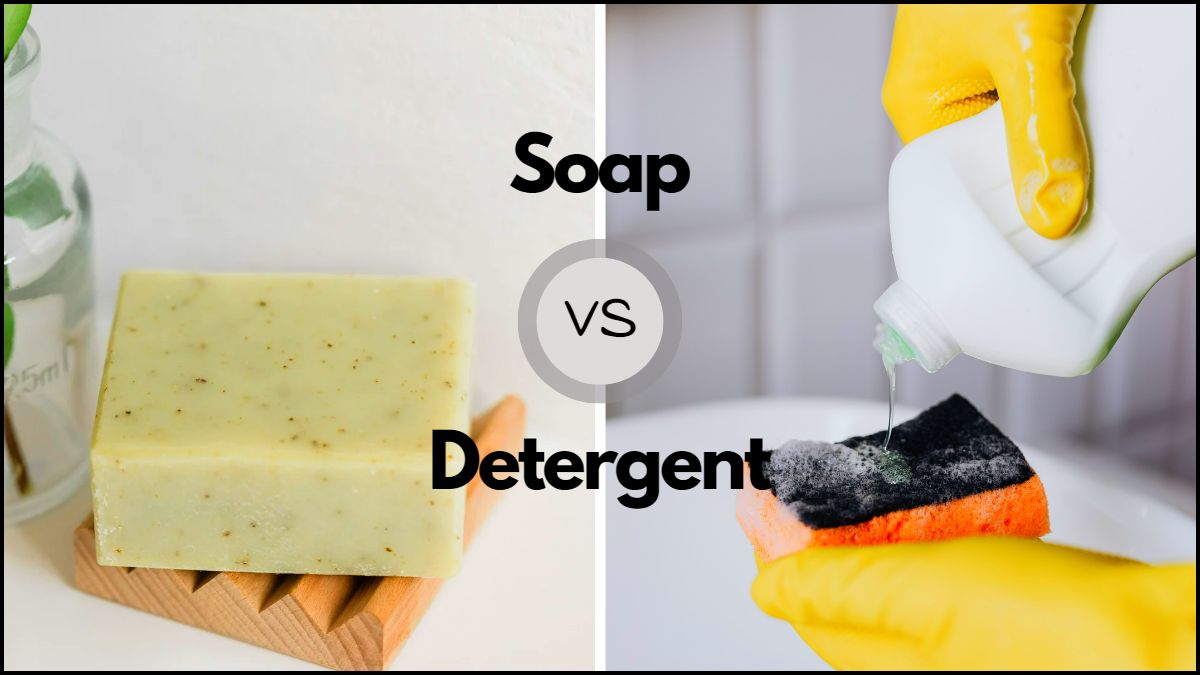
Do you think soap and detergent are the same thing? Think again! Both soap and detergent are used as cleaning agents, but their compositions and applications differ. Let’s first learn exactly what soaps and detergents are.
What are soaps?
Soaps are cleaning agents made from animal fats and vegetable oils. To make soap, glyceryl esters of fatty acids or fats are heated with an aqueous solution of NaOH. This is a process known as saponification, which results in the formation of glycerol as a byproduct.

Read also | What is the difference between reversible and irreversible reaction?
What are detergents?
Detergents are cleaning agents made from synthetic surfactants that are used to remove dirt and stains from surfaces, fabrics and other materials. To make synthetic detergents, petroleum chemicals, such as lauryl alcohol, are combined with sulfuric acid (H2SO4) and converted to sodium salt.

Read also | What is the difference between a heart attack and cardiac arrest?
Here are the differences between soap and detergents:
|
Soap |
Detergent |
|
The soaps are made from natural ingredients such as animal fats and vegetable oils, which are biodegradable. |
Detergents are typically synthesized in a laboratory using synthetic ingredients, which are not as biodegradable as natural ingredients. |
|
Cleansing soaps are sodium or potassium salts of long-chain fatty acids such as stearic, oleic, and palmitic acids. |
Detergents are long-chain carboxylic acids of ammonium or solphonate salts. |
|
A ‘-COONa’ group is connected to a fatty acid with a long alkyl chain. |
A ‘-SO3Na’ group is connected to a long alkyl chain. |
|
They are easily biodegradable. |
They are not easily biodegradable. |
|
They are not effective in hard water and produce foam. |
They do not lose their effectiveness in hard water. |
|
Examples include sodium palmitate, sodium stearate, and sodium oleate. |
Examples include deoxycholic acid and sodium lauryl sulfate. |
How do soaps and detergents clean?
Soap molecules have a polar salt at one end that is hydrophilic (attracted to water) in nature. The opposite end of the molecule is a non-polar chain of fatty acids or hydrocarbons that is hydrophobic in nature (repels water but attracts fat and other greasy things).
Let’s take the example of washing your hands. When you mix soap with water and then rub your hands, the oil molecules on your hands dissolve into the soap molecule as their hydrophobic end attracts them. Then, the hydrophilic end of the soap molecule helps suspend the fat molecules in the water, making it easier to rinse.
Once the greasy dirt and germs have been removed from your hands, the soap molecules completely surround them, creating small clumps known as micelles that prevent them from sticking to anything else as they wash down the drain.
In short, the difference between soap and detergent lies in the types of molecules each contains and how each reacts under different conditions.
Read also | What is the difference between reflex action and walking?
What is the difference between weather and climate?
Categories: Optical Illusion
Source: ptivs2.edu.vn